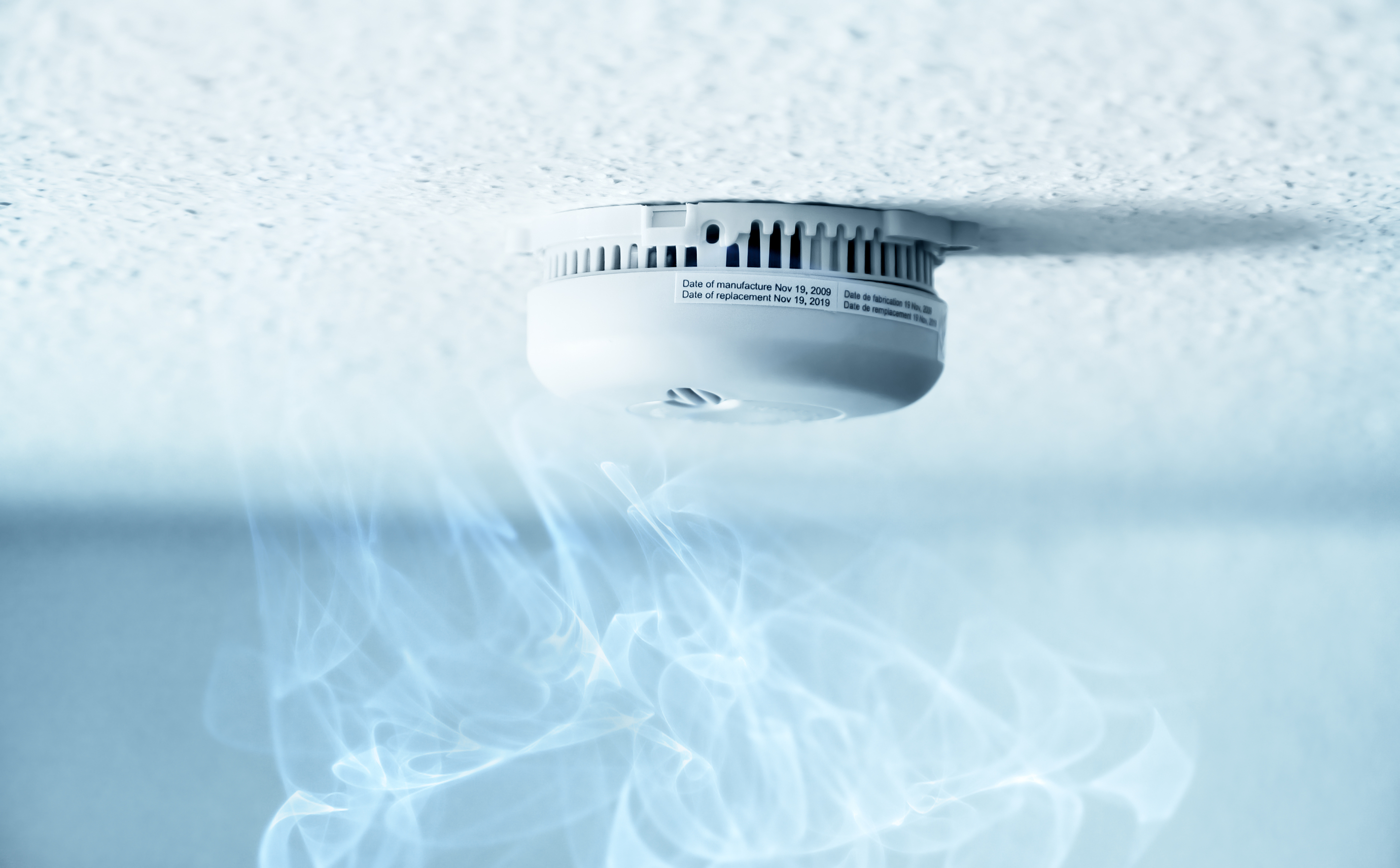
Imagine you are at home, cooking your favorite meal. Duty calls and you run upstairs for a few minutes. Suddenly, you are startled by the blaring beeps of a smoke alarm above your head. You rush back downstairs and find that your meal has ignited and is now a small fire in the center of your stove. In the few moments you took to panic, the fire spreads and your home is now in danger.
According to the National Fire Protection Association, deaths from fires are 85% more likely to happen at home. Traditional fire safety prep includes a standard smoke alarm, a call to the fire department, and teaching the children to “stop, drop, and roll.” Often, this is not enough. What if a fire has blocked the exits? What if you are sleeping in the middle of the night? Fires are devastating to a home and family, so to ensure yours is safe include the appropriate fire safety equipment.
If you are unsure about the available tools you can use or do not know which of those you would need, read our below guide to home fire safety equipment.
Smoke Detector
Smoke detectors are small but effective machines that sound when even the tiniest amounts of smoke are detected. When installed properly in every bedroom, kitchen, and sleeping areas, you can be assured you will be alerted if a fire is present in the home. Maintenance is minimal, and includes testing the alarm once a month by pressing the ‘test’ button and also replacing the batteries yearly. These alarms will chirp when the battery power is low to help you remember. The National Fire Protection Association advises to replace smoke detectors every ten years to assure proper protection.
Carbon Monoxide (CO) Detectors
Smoke and flames can be seen immediately, but carbon monoxide is an odorless, colorless gas that occurs from fuel-burning appliances venting incorrectly. Breathing in this gas will cause symptoms such as headaches, dizziness, unconsciousness, and death, depending on the exposure level. Since the gas is easily unnoticed, carbon monoxide has earned its nickname “the silentkiller.” CO Detectors will sound when the poisonous gas is present in your home, so it is important these devices are installed in areas that can easily wake someone.
Multi-Use Fire Extinguishers
One of the most effective tools for quickly putting out small fires and preventing them from growing, the fire extinguisher is a must-have in every kitchen. These extinguishers are handheld, easy to use, and can fight against different types of fires such as electrical, gas, and chemical fires. The sleek, cylinder design makes for easy storage.
Monitored Systems
When a fire grows out of control, you need to escape fast. This may hinder you from calling the fire department, costing you precious moments that can cause the destruction of your home, or worse. With a monitored system, you have less to worry about. These systems are installed in a common area of your home and linked to your other equipment such as your home’s smoke and CO detectors. When these alarms sound, a signal is sent from your system to your local fire department, leaving you with means for a prompt escape and assurance that help is on the way.
Heat Detectors
Similar to a smoke and CO detector, heat detectors will sound if your home heats to a dangerous level. The temperature, which causes the alarm to sound, can be predetermined during installation. When paired with other fire safety devices, a heat detector will provide an additional guarantee that you will be alerted when there is a fire.
Medical Alert System
Ideal for handicapped citizens and seniors with mobility problems, these devices are similar to having a monitored system. The difference: it’s portable. Available as pendants, wristbands, and pagers, the systems go wherever the owner goes. If there is a fire or medical emergency, the owner presses a button on the system and the proper authorities are alerted. These small but handy systems will not only bring the wearer peace of mind, but their concerned families as well.
Fire Escape Ladders
If a fire is blocking traditional means for exiting the home, a fire escape ladder is essential for safely surviving. Ideal for homes that have more than one floor, the ladders are neatly bundled for easy storage but unravels quickly and hooks securely onto a window sill, providing a way for safely climbing down to ground level.
When you combine all the tools listed with the knowledge on how to use them, the chances of you experiencing a fire-related tragedy are significantly reduced. Fires destroy homes and live, and virtually have a mind of their own. Equipping your home with these tools is essential to combating fires and keeping your home from burning and your family safe.
To learn more about what you can to do protect your home against sudden fires, visit The National Fire Protection Association Website or contact an authorized TruWatch representative.Remember, your home isn’t fireproof, but owning fire safety equipment means you will be prepared to be.
Sources:
http://firewize.com/page/general/as1851-maintenance-fire-protection-systems-and-equipment



No Comments